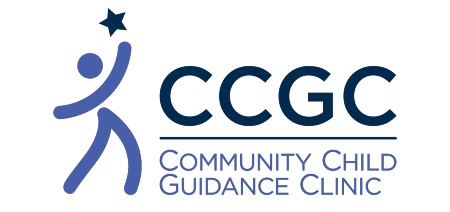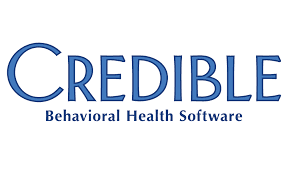How a Healthy Breakfast Improves the School Day
by Zoe Anderson

As a kid, we’re taught to consider breakfast the most important meal of our day. Whether or not we all follow this advice...well that is a whole other story. However, once again science comes to the rescue to help us understand why this age-old guidance is actually very prudent!
Eating a meal in the morning has been shown to improve memory recall and cognitive function throughout the day, put you in a better mood, and improve work/school performance and overall health in general. When specifically studying school breakfast programs, it has been found that routinely eating breakfast is linked to lower school absence rates and higher test scores in math and reading. A lot of these studies point to the importance of making breakfast a daily habit in order to see these long term test score improvements, but there is also evidence that an average school day can be improved when a child starts the day with a healthy breakfast. Through collecting first-hand experiences of teachers who have students in school breakfast programs, a pattern emerges showing that children who ate breakfast tend to have better classroom performance than a peer who did not.
What can we interpret this all to mean? Certainly, there is something about eating breakfast that improves our energy and brain function. But why does breakfast seem to improve this more than any other meal? It would be easy to assume that eating anything at any time of day could improve your energy, and you wouldn’t be wrong, but there is something special about the biology of our metabolism that makes your first meal of the day more important than the others.
In order to understand why this is, we are going to have to have a quick lesson in biochemistry. Your body basically has two different states that it constantly alternates between; the fed state, which is the time following eating when your body is getting energy from the food its digesting, and the fasted state, which is when you haven’t eaten in a while and your body is getting energy from its storage. The longest time that most people will be in the fasted state on a daily basis is overnight while we are asleep, but even though we aren’t eating, our body still wants to keep our blood glucose (blood sugar) high. Everything you eat is turned into glucose eventually, whether it be as stored glucose to use later, or as blood glucose to use right away. It is important that your body always keeps the same amount of blood glucose, as this is what gives you enough energy to be alive. On the other hand, not being able to regulate your own blood glucose levels is what people with diabetes struggle with.
So what happens with breakfast? Let’s say it’s an hour before bedtime. You had dinner a little while ago and now decide to have a bowl of ice cream as dessert before bed. When you go to sleep in an hour, your body will still be in the fed state as it digests your dinner and ice cream. All the energy your body uses comes directly from this food. Around 2 AM, your body is now done digesting your ice cream and you switch over to the fasted state. Since you no longer have food in your stomach to get energy from, your body starts reaching into its glucose storages in your liver. Your alarm clock goes off at 7 AM letting you know it’s time to get up and start your day, and you get up to go make yourself some scrambled eggs. While you eat your eggs, your body switches back into the fed state. You are now getting your blood glucose from the food you eat, and any extra glucose that you don’t need from your breakfast goes back into your liver’s glucose storage to replace what you used last night. Your body now has a high blood glucose AND plenty of extra glucose stored. If you eat a good enough breakfast, you may even have enough food to keep your body in the fed state until lunch time, meaning no need to rely on that important storage.
Now instead imagine that your alarm goes off and you get up to start your day. However, you choose to skip breakfast, thinking you can wait until lunchtime to eat. Your body never switches into the fed state, but stays in the fasted state continuing to use up your limited liver glucose storage. This is a problem because your liver will run out of its storage after 6-8 hours (or after only 90 minutes of intense exercise). This means that by about 10 AM (much sooner than lunchtime), your body is no longer just in the fasted state, and thinks that it needs to switch into starvation mode to conserve energy, not knowing when it’s next meal will be. When your body switches into this type of mild starvation mode, it starts to breakdown fat in your body, limiting how much energy it uses. When you are in the fed state with lots of blood and stored glucose, your body is able to use all that extra glucose for complicated functions, such as all the thinking required to solve a math equation. But, when you are in this prolonged fasting state, your body is carefully conserving the limited energy it has to only do essential brain functions like staying awake. This means that there isn’t enough energy leftover to focus on doing well in school.
Although the most important thing you can do in the morning is get some kind of food in your body, it is even better if that food is also something nutritious and healthy. In the same studies that found the connection between routinely eating breakfast and improved school performance, scientists also noted that having nutritious breakfasts is even more beneficial. This is because good nutrition is linked to better concentration, academic performance and IQ test scores. Eating something packed full of energy-producing nutrients, like eggs or a smoothie, will be even more beneficial to starting your day than something that is an ultra-processed food. Ultra-processed foods are any foods that are made from substances extracted from foods and artificial additives, which tend to be stripped of their nutrients during processing. Examples of this would be sugary cereal, fast food, or frozen pancakes drenched in syrup.
At CCGC’s sustainable gardening program, one of our goals is to use the produce that we grow to create nutritious foods to start the days of our students. Recently, we added the kale grown in our indoor grow racks to fruit smoothies that our students were able to try. They were a delicious hit that certainly put our students into a nutrient-filled fed state when they returned to their classes. As we continue to grow more food, activities like this can hopefully become more than just a treat. Stay tuned to watch us grow!











